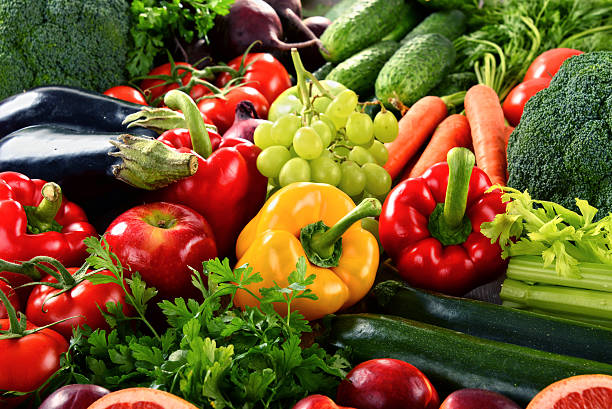What does it really mean to call someone your best friend? And when that person is also your romantic partner, how does it affect your emotional life, well-being, and perception of connection? These questions are at the heart of a compelling new study published in the Journal of Social and Personal Relationships, which examines the nuanced role of friendship within romantic partnerships and how these labels influence our everyday emotional support systems.
Drawing data from the nationally representative American Friendship Project, the research offers surprising insights: only about 14% of American adults in romantic relationships identified their partner as their best friend. While that figure might seem low in a society that often idealizes romantic relationships as all-encompassing, it opens up a deeper discussion about the nature of intimacy and support in modern life.
Rethinking the Ideal: Should Your Partner Be Your Best Friend?
The study, led by Natalie Pennington, an assistant professor at Colorado State University, challenges a popular narrative—that our romantic partner should also be our best friend. While that ideal can enhance companionship, it may not be the most effective model for overall social support. The data showed that people who had a best friend outside of their romantic relationship often reported higher levels of perceived support.
Using the convoy model of social relations as a theoretical lens, the research investigates how people construct their emotional networks. This model proposes that people move through life surrounded by a dynamic and layered set of relationships, from the innermost core of close ties to broader social circles. According to Pennington, the idea was to explore how individuals define “best friend,” how that definition maps onto emotional experiences, and what psychological outcomes result from different configurations of friendship and romance.
A Diverse Snapshot of American Adults in Love and Friendship
The study examined data from 940 adults across the United States, aged 18 to 85, with a median age of 41. All were in romantic relationships and had at least one person they called a best friend. Participants were asked to name up to seven people they considered friends. Labels were left open-ended: a person could be marked as a “close friend,” a “romantic partner,” a “best friend,” or a combination of these.
Interestingly, only 36% of respondents listed their romantic partner as one of their friends, and just 14.4% labeled them as their best friend. Some participants labeled multiple people as best friends, challenging the monogamous ideal of friendship often imposed by social norms. These patterns suggest that many people draw emotional sustenance from more than one source—and that perhaps we should all be encouraged to do so.
The Power of Labels: What’s in a Name?
One of the study’s central revelations was that labels like “friend” and “best friend” carry different emotional weights depending on the context in which they’re used. Those who considered their romantic partner their best friend described stronger emotional closeness and more frequent shared routines. Yet, among people who already saw their partner as a friend, calling them a “best friend” versus simply a “friend” didn’t make a notable difference in the relationship’s emotional quality or routine interaction.
This suggests that once a romantic relationship reaches a certain level of intimacy, adding the “best friend” label may be more symbolic than functional. The emotional depth may already be present, regardless of how we describe it.
Age, Income, and Marital Status: Who Is Most Likely to Fuse Romance and Friendship?
Demographic patterns in the study revealed some counterintuitive findings. Older adults were slightly more inclined to describe their partner as their best friend, perhaps reflecting the long-term bonds formed over years. Surprisingly, people with higher incomes and those who were married were less likely to use this label.
This could point to a wider emotional support network available to higher-income individuals, allowing them to distribute their emotional investments more evenly across multiple relationships. Meanwhile, lower-income participants—who may face more constraints on time and resources—tended to lean more heavily on their romantic partner for emotional fulfillment, a dynamic that could increase vulnerability if the romantic relationship falters.
Companionship vs. Support: Two Sides of the Relationship Coin
One of the study’s most insightful distinctions lies in how people experience companionship versus social support. Those who identified their romantic partner as their best friend often reported high levels of companionship—shared time, mutual enjoyment, attending events together, and generally being one another’s go-to person for daily life.
However, when it came to emotional support—having someone to lean on during hard times, to offer guidance, or simply to listen—participants who had a best friend outside the romantic relationship reported feeling more supported. This finding suggests that while romantic partnerships excel at providing companionship, they might not be sufficient for meeting all of an individual’s emotional needs.
The Danger of Putting All Your Eggs in One Emotional Basket
The study’s implications highlight an important message: relying solely on a romantic partner for emotional fulfillment might be too narrow a strategy for long-term well-being. Friendship offers something uniquely valuable—emotional support that is often less entangled with expectations of romantic obligation, and thus potentially more flexible, enduring, and diverse.
Friendship outside the romantic domain can also serve as a buffer during periods of conflict or strain within the romantic relationship. It’s not uncommon for individuals to experience emotional isolation when their only close connection is with a partner, especially if that relationship hits a rough patch.
A Reminder That Connection Is Multifaceted
This research underscores the importance of diversifying emotional investments. Rather than treating romantic love as the single ultimate source of intimacy, it encourages us to value and nurture platonic friendships alongside it. Doing so doesn’t diminish the romantic bond—it enriches it by reducing pressure and broadening the landscape of support.
Interestingly, the study points out that participants who had multiple best friends were just as likely to report meaningful connection as those who prioritized one person. The idea that a “best friend” must be a singular person is more of a cultural construct than a psychological necessity. Some participants even included both a romantic partner and a close friend in the best friend category, suggesting that people’s internal maps of intimacy are far more intricate than simple binaries allow.
The Limits and Potential of the Research
It’s worth noting that the study was based on self-report data from a single moment in time. That makes it hard to determine causality: Are people who label their partner their best friend experiencing more companionship because of the label, or are they already feeling close and using the label to reflect that experience?
Also, because the survey’s primary focus was friendship, participants may not have thought to include their romantic partners unless prompted. This raises interesting questions about how societal expectations shape how we conceptualize different types of relationships.
Pennington acknowledges these limitations and notes that future studies could address them by collecting data from both partners in a couple. A dual perspective would allow researchers to understand whether mutual best-friendship has different outcomes than one-sided labeling—and how shared perceptions shape relationship quality.
The Takeaway: Cultivate a Wider Network of Care
The American Friendship Project aims not just to study human connection, but to inform public interventions that help people improve their social lives. In an age where loneliness is increasingly recognized as a public health concern, studies like this offer actionable insights.
The core message is clear: the healthiest relationships often thrive within a web of broader connections. Valuing friendship—both within and outside of romance—adds depth and resilience to our lives. It enables us to celebrate our joys and endure our sorrows with a network of emotional allies, rather than depending on just one person to meet all our needs.
Pennington puts it best: “Invest time and energy into the people who matter, as they are the ones who can be there to help you when you’re feeling down and to celebrate your wins. Valuing friendship in a romantic partnership is a great thing, but there is also value in investing in platonic friendships to have that fuller network to support you.”
This research invites all of us to rethink how we define intimacy and connection. Love may be the centerpiece of many people’s emotional lives, but friendship is the quiet architecture that holds the structure together. Whether it’s your partner, your childhood friend, or someone you just met last year, nurturing a diverse circle of close relationships might be the real key to emotional well-being.






